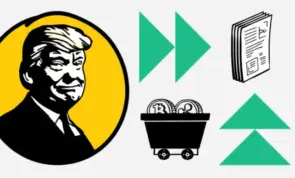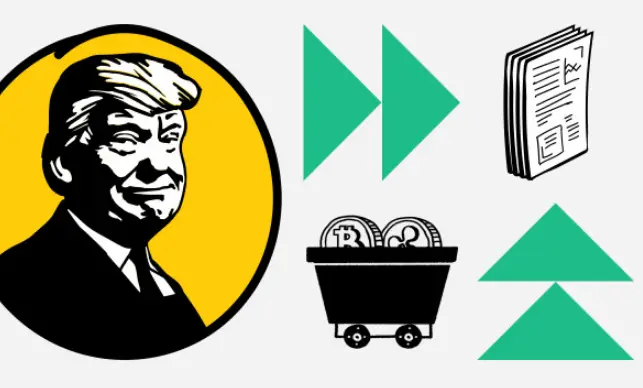Trump Greenlights Crypto in 401(k) Plans — A Game-Changer for Retirement Investing
On August 7, 2025, U.S. President Donald Trump signed an executive order that could flip the script on retirement savings. Americans can now allocate part of their 401(k) plans into cryptocurrencies, real estate, and private equity. The move has already sparked buzz across Wall Street and the crypto world. So what does it mean, who benefits, and what’s next?
The Executive Order: What’s New and Why It Matters
Until recently, crypto in retirement accounts was basically a regulatory no-go. Now, pension funds can add alternative assets — from Bitcoin and Ethereum to tokenized real estate. This opens up a massive new market for crypto and gives investors more ways to diversify.
For the crypto industry, it’s a major step toward institutional adoption. Pension funds manage trillions in assets, and even a tiny slice flowing into digital assets could trigger a tidal wave of capital.

Who Stands to Gain?
- Investors — a chance to add high-growth crypto assets to retirement portfolios and potentially boost returns.
- Crypto exchanges & companies — more trading volume, long-term clients, and serious capital inflows.
- Private equity funds & developers — new funding channels via retirement savings.
Why Investors Are Paying Attention
Crypto has historically outperformed traditional assets — though with wild swings. Adding digital assets to retirement plans could:
- Let investors ride the upside of Bitcoin, Ethereum, and other promising coins.
- Protect savings from inflation thanks to crypto’s decentralized nature.
- Diversify portfolios beyond stocks and bonds.
The Risks — Because It’s Not All Moonshots
Let’s be real: crypto isn’t a magic money machine. Key risks include:
- High volatility — your portfolio could swing like a rollercoaster.
- Low liquidity in some tokens, especially in DeFi and NFT sectors.
- Regulatory curveballs that could restrict access or change the rules mid-game.
So before you YOLO your retirement into altcoins, do your homework. Stick to trusted exchanges and use secure storage like hardware wallets.
Why This Is a Big Win for Crypto
Crypto in retirement plans = mainstream validation. It could lead to:
- More trust from institutional investors.
- Higher liquidity and market cap.
- New crypto products built for long-term investing.
Smart Moves for Retirement Crypto Investing
If you’re thinking of adding crypto to your 401(k), here’s how to play it safe:
- Start small — 5–10% of your portfolio tops.
- Stick to large-cap coins like BTC, ETH, maybe SOL or ADA.
- Use dollar-cost averaging (DCA) to smooth out volatility.
- Keep an eye on regulators — especially the SEC and U.S. Department of Labor (DOL).
Exchanges & Custody Services: Who’s Ready?
With the order in effect, crypto exchanges will play a key role in ensuring transparency, liquidity, and security. Platforms like Coinbase and Kraken are already signaling readiness to work with retirement funds. Custody services will also be crucial for compliant asset storage.
Forecasts & Market Impact
Experts predict that U.S. pension funds could allocate 0.5% to 2% of their assets into crypto over the next 3–5 years. With the 401(k) market valued at over $7 trillion, that’s a potential $35–140 billion injection into crypto. That kind of capital could move markets and supercharge blockchain infrastructure.
Bottom Line
Trump’s executive order to include crypto in retirement plans is a historic moment for the industry. It opens new doors for investors and legitimizes digital assets as part of long-term financial planning.
But let’s not get carried away — crypto is still high-risk. To tap its potential, you’ve got to be smart, stay informed, and work with reliable partners. If done right, this policy shift could be more than just a headline — it could be your ticket to financial freedom in the Web3 era.
